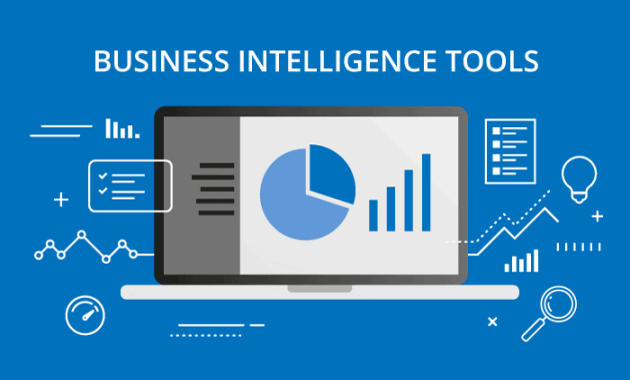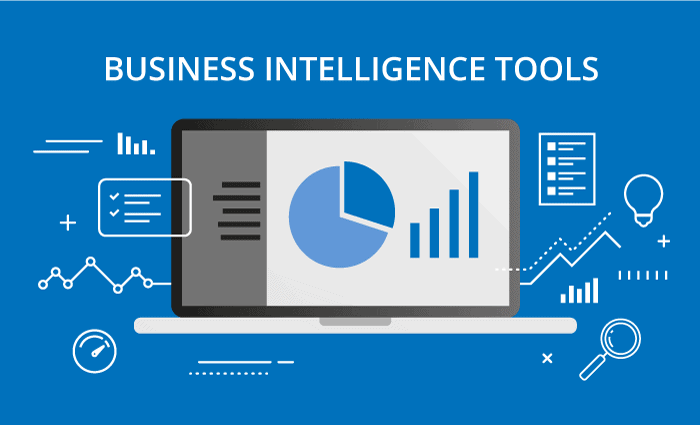
Business Intelligence Tools: A Deep Dive into Consumption Monitoring
In today’s data-driven world, understanding how resources are consumed is critical for business success. From energy and raw materials to marketing spend and employee time, every aspect of a business involves consumption. Effectively monitoring this consumption allows organizations to identify inefficiencies, optimize resource allocation, and ultimately, improve profitability. This is where Business Intelligence (BI) tools become invaluable. This article explores the power of Business Intelligence tools specifically designed for monitoring consumption, providing insights into their benefits, functionalities, and the best options available.
The core benefit of utilizing Business Intelligence tools for consumption analysis lies in their ability to transform raw data into actionable insights. These tools collect, process, and analyze data from various sources, presenting the information in clear, concise, and visually appealing formats. This allows decision-makers to quickly grasp trends, identify anomalies, and make informed decisions based on factual evidence rather than guesswork. Accurate consumption data is the cornerstone of strategic planning.
The Importance of Monitoring Consumption
Why is monitoring consumption so crucial? Several compelling reasons highlight its importance:
- Cost Reduction: Identifying areas of excessive consumption allows businesses to pinpoint opportunities for cost reduction. This could involve optimizing energy usage, reducing waste, or negotiating better deals with suppliers.
- Improved Efficiency: By understanding how resources are utilized, organizations can streamline processes and improve operational efficiency. This leads to higher productivity and reduced waste.
- Enhanced Decision-Making: Data-driven insights empower decision-makers to make more informed choices. This reduces the risk of costly mistakes and helps to align strategies with actual performance.
- Sustainability: For businesses committed to environmental responsibility, monitoring consumption is essential for tracking their carbon footprint and identifying ways to reduce their impact.
- Compliance: Many industries have regulations related to resource consumption. BI tools can help organizations ensure compliance with these regulations.
These benefits collectively contribute to a more resilient, efficient, and profitable business model. Proactive consumption monitoring is a key differentiator in today’s competitive landscape.
Key Features of Business Intelligence Tools for Consumption Monitoring
Effective BI tools designed for consumption monitoring offer a range of features that facilitate data collection, analysis, and reporting. These features typically include:
- Data Integration: The ability to connect to various data sources, including databases, spreadsheets, cloud services, and IoT devices. This ensures a comprehensive view of consumption data.
- Data Visualization: Interactive dashboards, charts, and graphs that present data in an easy-to-understand format. This makes it easier to identify trends and patterns.
- Reporting and Analytics: Tools for creating customized reports and performing advanced analyses, such as trend analysis, forecasting, and what-if scenarios.
- Alerting and Notifications: Automated alerts that notify users of significant changes in consumption patterns, such as spikes in energy usage or unusually high material waste.
- Data Governance and Security: Features to ensure data accuracy, security, and compliance with privacy regulations.
- Real-time Monitoring: The capability to track consumption data in real-time, allowing for immediate responses to changes in usage patterns.
These features enable businesses to move beyond simple data collection and gain a deeper understanding of their consumption patterns. This deeper understanding empowers smarter decision-making.
Top Business Intelligence Tools for Consumption Monitoring
Several BI tools are well-suited for consumption monitoring. The best choice depends on the specific needs and resources of the organization. Here are a few leading examples:
Tableau
Tableau is a widely used BI tool known for its intuitive interface and powerful data visualization capabilities. It allows users to easily connect to various data sources, create interactive dashboards, and share insights with others. Tableau is a strong choice for businesses looking for a user-friendly tool that can handle complex data analysis related to consumption.
Microsoft Power BI
Power BI is another popular BI platform, integrated with the Microsoft ecosystem. It offers a wide range of features, including data modeling, advanced analytics, and collaboration tools. Power BI is a cost-effective option, particularly for businesses already using Microsoft products. This tool is excellent for detailed consumption analysis.
Qlik Sense
Qlik Sense is known for its associative engine, which allows users to explore data in a more intuitive way. It offers a flexible and scalable platform for data discovery and analysis. Qlik Sense is a good option for organizations that need to analyze large datasets related to consumption.
Sisense
Sisense is a BI platform that focuses on ease of use and speed of deployment. It offers a drag-and-drop interface and a wide range of data connectors. Sisense is a good choice for businesses that need to quickly implement a BI solution for consumption monitoring.
Zoho Analytics
Zoho Analytics is a cloud-based BI tool that offers a comprehensive set of features at an affordable price. It’s a good option for small and medium-sized businesses that need a user-friendly and cost-effective solution for consumption data analysis.
When choosing a BI tool, consider factors such as the size and complexity of your data, your budget, the level of technical expertise within your organization, and the specific consumption metrics you want to track. Evaluate tools based on user reviews and industry reports.
Implementing Business Intelligence for Consumption Monitoring: A Step-by-Step Guide
Implementing a BI solution for consumption monitoring involves several key steps:
- Define Your Objectives: Clearly define what you want to achieve with consumption monitoring. What specific metrics do you want to track? What insights are you hoping to gain?
- Identify Data Sources: Determine the data sources that contain the relevant consumption data. This could include energy meters, water meters, production systems, and sales records.
- Choose a BI Tool: Select a BI tool that meets your specific needs and budget. Consider the features, ease of use, and scalability of the tool.
- Connect to Data Sources: Configure the BI tool to connect to your data sources and extract the relevant data.
- Clean and Transform Data: Clean and transform the data to ensure accuracy and consistency. This may involve removing duplicates, correcting errors, and converting data into a usable format.
- Create Dashboards and Reports: Design dashboards and reports that visualize your consumption data and provide actionable insights.
- Analyze Data and Identify Trends: Analyze the data to identify trends, patterns, and anomalies. Use these insights to improve decision-making.
- Monitor and Optimize: Continuously monitor your consumption data and optimize your processes to improve efficiency and reduce costs.
Following these steps will help you successfully implement a BI solution for consumption monitoring. This will enable you to realize significant benefits.
The Future of Consumption Monitoring with Business Intelligence
The future of consumption monitoring with BI tools is promising. As technology advances, we can expect to see:
- Increased Automation: Automated data collection, analysis, and reporting will become even more prevalent, freeing up human resources for more strategic tasks.
- Advanced Analytics: The use of artificial intelligence (AI) and machine learning (ML) will become more common, enabling more sophisticated analysis and predictive capabilities.
- Real-time Insights: Real-time data streams will provide instant visibility into consumption patterns, allowing for immediate responses to changes.
- Integration with IoT: The integration of BI tools with the Internet of Things (IoT) will provide access to a wider range of consumption data from connected devices.
- Focus on Sustainability: There will be an increasing emphasis on using BI tools to track and improve environmental sustainability efforts.
These advancements will further enhance the value of BI tools for consumption monitoring, helping businesses operate more efficiently, sustainably, and profitably. The evolution of BI tools will continue to drive improvements.
Conclusion: Harnessing the Power of Business Intelligence
Business Intelligence tools are essential for modern businesses seeking to optimize resource utilization and improve profitability. By providing a clear understanding of consumption patterns, these tools empower organizations to make data-driven decisions, reduce costs, and enhance efficiency. From selecting the right tool to implementing a robust monitoring system, the journey towards optimized consumption is achievable. Embracing BI for consumption monitoring is not just a technological upgrade; it’s a strategic imperative. [See also: Optimizing Energy Consumption with BI Tools] [See also: Data Visualization Best Practices] [See also: Choosing the Right BI Platform]
By leveraging the power of BI, businesses can unlock significant value, drive sustainable practices, and gain a competitive edge in today’s dynamic market. The future of business intelligence in the realm of consumption monitoring is bright.

